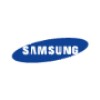
Different Cycles of Capecitabine Usage in Esophageal Cancer Concurrent Chemoradiotherapy
Stage III Esophageal Squamous Cell CarcinomaStage II Esophageal Squamous Cell CarcinomaDefinitive chemoradiotherapy with cisplatin with cisplatin plus 5-fluorouracil is the standard in Western countries in esophagus cancer.But in China because of its toxic reaction, most of patients stop the halfway.Because low toxicity, Capecitabine is widely used in the chemotherapy of esophageal cancer. The purpose of this experiment was to study the different cycle on capecitabine with chemotherapy for esophageal cancer chemoradiation effect.We are prepared to within 2 years study recruited 200 patients with esophageal cancer.The primary endpoint is overall survival and the secondary endpoints include progression-free survival, response rate,pathologic complete response rate and adverse events.

Reactivating NK Cells in Treating Refractory Head and Neck Cancer
Nasopharyngeal CancerHead and Neck Squamous Cell CarcinomaThis study aims to determine the safety and efficacy of expanded activated autologous NK cells administered after cetuximab in patients with EGFR-positive nasopharyngeal carcinoma or head and neck squamous cell carcinoma.

Effect of Intraoperative Controlled Release 5-Fluorouracil Therapy on Recurrence in Hepatocellular...
Hepatocellular CarcinomaRecurrenceThe aim of this study is to confirmed the role of intraoperative controlled release 5-Fluorouracil therapy in the prevention of recurrence after surgery for HCC patients with high risk of preoperative prediction of microvascular invasion.

A Phase II Clinical Trial of Chemotherapy With or Without Endostar® Continuous Intravenous Infusion...
Nasopharyngeal CarcinomaWe define refractory nasopharyngeal carcinoma as the following: recurrence with radiation brain injury after radiotherapy, recurrence after the second or more courses of radiotherapy, standard treatment failure after recurrence, and first-line treatment failure after multiple distant metastasis. There is no standard treatment for refractory nasopharyngeal carcinoma. Platinum plus 5-Fu is the classic regimen for primary treatment of nasopharyngeal carcinoma. Endostatin is a multiple targeted angiogenesis inhibitor acting on tumor associated neovascular endothelial cells, normalizing the morphology and function of tumor vasculature, and indirectly leading to the quiescence or reduction of tumors. The purpose of this phase II clinical trial is to determine the efficacy and safety of nedaplatin plus continuous low dose 5-Fu intravenous infusion combined with endostar® (Recombinant Human Endostatin Injection) continuous intravenous infusion compared with nedaplatin plus continuous low dose 5-Fu intravenous infusion alone in refractory nasopharyngeal carcinoma. The study hypothesis is that nedaplatin plus continuous low dose 5-Fu intravenous infusion combined with endostar® continuous intravenous infusion is effective and safe in refractory nasopharyngeal carcinoma.

Different Dose of Methotrexate for the Treatment of Meningeal Carcinomatosis
Meningeal CarcinomatosisThe main purpose of this study is to compare the effect of 10 mg and 15 mg methotrexate in the treatment of meningeal carcinomatosis.

HAIC of FOLFOX Plus Sorafenib vs HAIC of FOLFIRINOX Plus Sorafenib for Advcanced HCC
Hepatocellular CarcinomaThe purpose of this study is to evaluate the efficacy and safety of hepatic arterial infusion chemotherapy (HAIC) of oxaliplatin, 5-fluorouracil and leucovorin plus sorafenib compared with HAIC of irinotecan, oxaliplatin, 5-fluorouracil and leucovorin plus sorafenib in patients with advanced hepatocellular carcinoma (HCC)

Expanding Phase III Study of Tyroserleutide for Injection
Hepatocellular CarcinomaThis is a randomized, double-blinded, placebo-controlled, multi-center Clinical Trial. Patients with no tumor lesions 21 days after resection of hepatocellular carcinoma will be randomized in a 1:1 ratio to 1 of the 2 treatment groups:6mg/d Tyroserleutide (injection), or placebo

Recurrence Rate of Hepatocellular Carcinoma After Treatment of Chronic Hepatits C Patients With...
Hepatocellular CarcinomaHepatitis C1 moreUnexpected results were published in 2016 showed increased aggressiveness and rates of HCC recurrence after curative treatment of HCC in HCV patients treated by DAAs achieving SVR. On the other hand, the retrospective analysis of ANRS study, did not observe an increased risk of HCC recurrence after DAAs treatment in patients who underwent curative HCC treatment. Assess the recurrence rate of HCC in HCV infected patients with prior history of treated HCC who achieved rCR with and without administration of DAAs and assess the effect of its timing.

Durvalumab Plus Tremelimumab Combined With Proton Therapy for HNSCC
Head and Neck Squamous Cell CarcinomaClinical Phase: phase II single arm study Primary Objectives: Response rate Number of Subjects: 27 patients Study Population: recurrent or metastatic head and neck squamous cell carcinoma Investigational Product(s), Dose, and Mode of Administration: Durvalumab 1500mg plus tremelimumab 75mg via IV infusion Q4W, starting on Week 0, for up to a maximum of 4 doses/cycles followed by durvalumab monotherapy 1500mg via IV infusion Q4W, starting 4 weeks after the last infusion of the combination until progression.). Proton therapy 5 GyE x 5 fractions - Study Assessments and Criteria for Evaluation: Safety Assessments: according to NCI CTCAE version 4.0 Efficacy Assessments: according to RECIST version 1.1 - Statistical Methods and Data Analysis: PFS: from the date of treatment to the date of progression or death or last follow-up OS: from the date of treatment to the date of death or last follow-up - Sample Size Determination: Patients must have a histologically confirmed diagnosis of HNSCC. In this phase II study, up to approximately 27 eligible patients will be enrolled. It is anticipated that full accrual to this study will take approximately 24 months. H0: Objective response rate ≤10% H1: Objective response rate ≥35% According to Simon's two-stage optimal design (power of 90% and one-sided alpha of 0.05), this study needs total 27 evaluable patients. At the first stage, 11 patients would be enrolled. If two or more among them achieve objective response, the study will go forward the second stage. At the second stage, 16 additional patients (total 27 patients) would be enrolled. Among the total 27 evaluable patients, six or more objective responses are necessary for this drug to be evaluated further in the group of R/M HNSCC

Efficacy and Safety of Apatinib Combined With TACE in Patients With Hepatocellular Carcinoma
Hepatocellular Carcinoma Refractory to Transcatheter Arterial ChemoembolizationEfficacy and Safety of Apatinib Combined With TACE in Patients With Hepatocellular Carcinoma Refractory to Transcatheter Arterial Chemoembolization .
